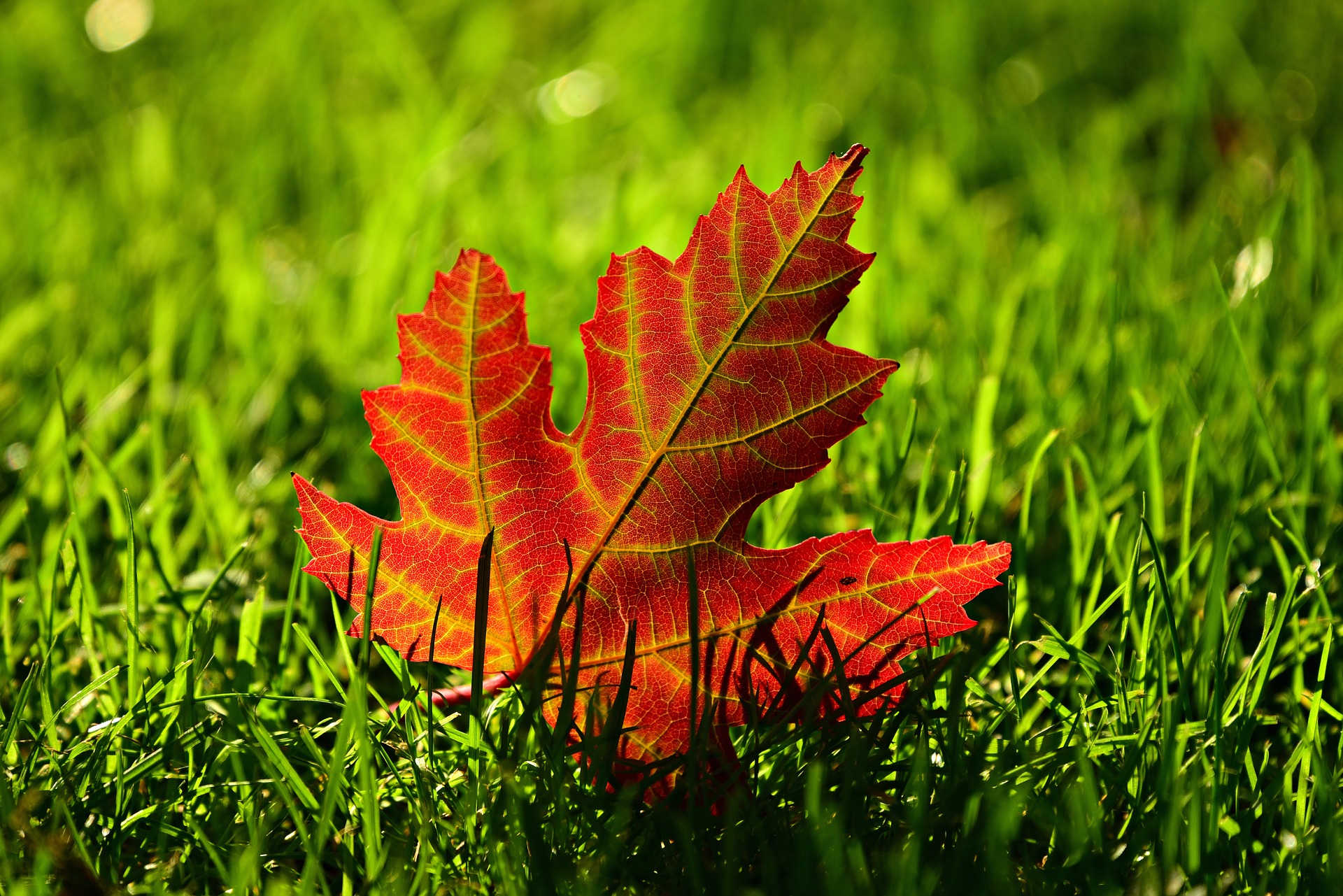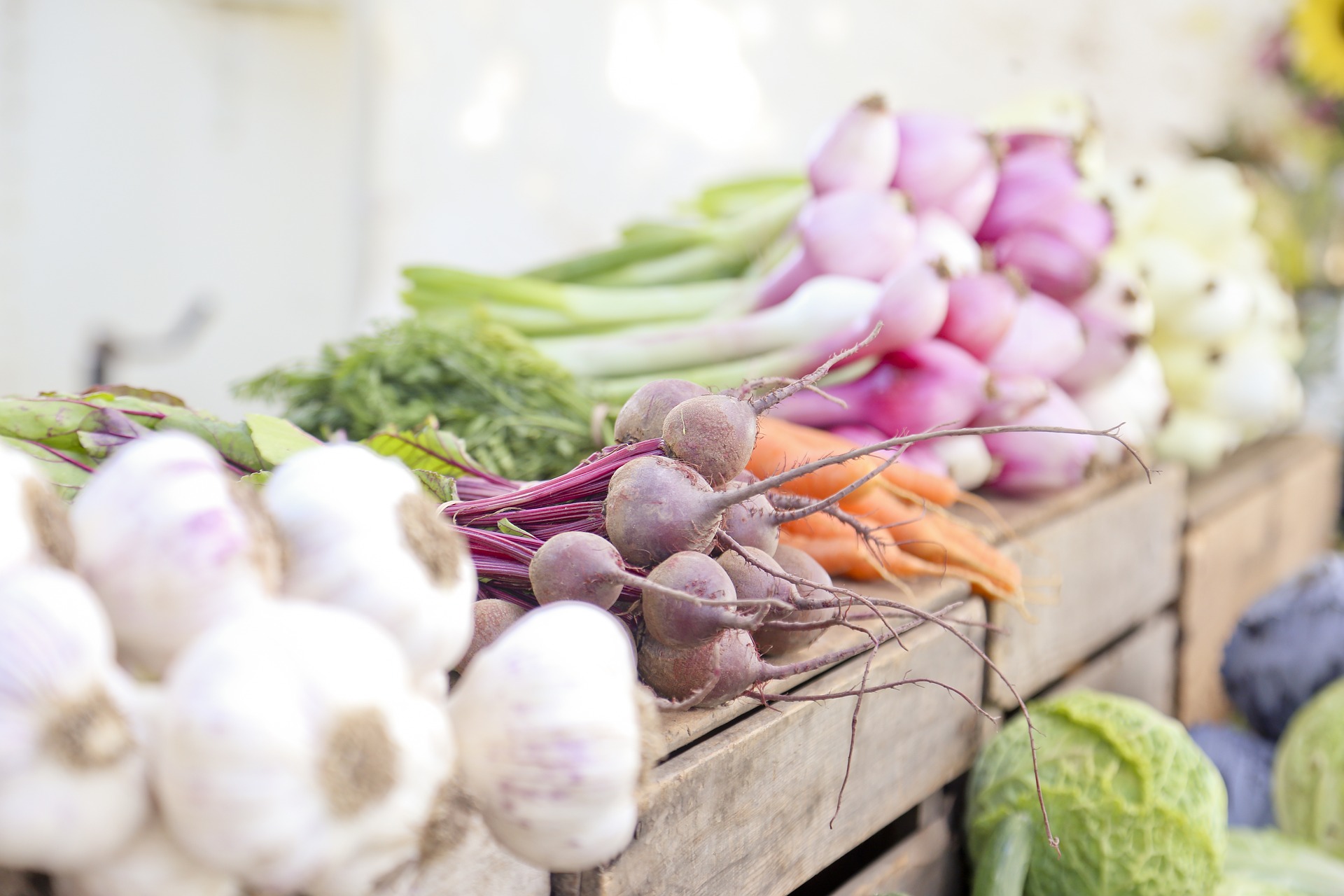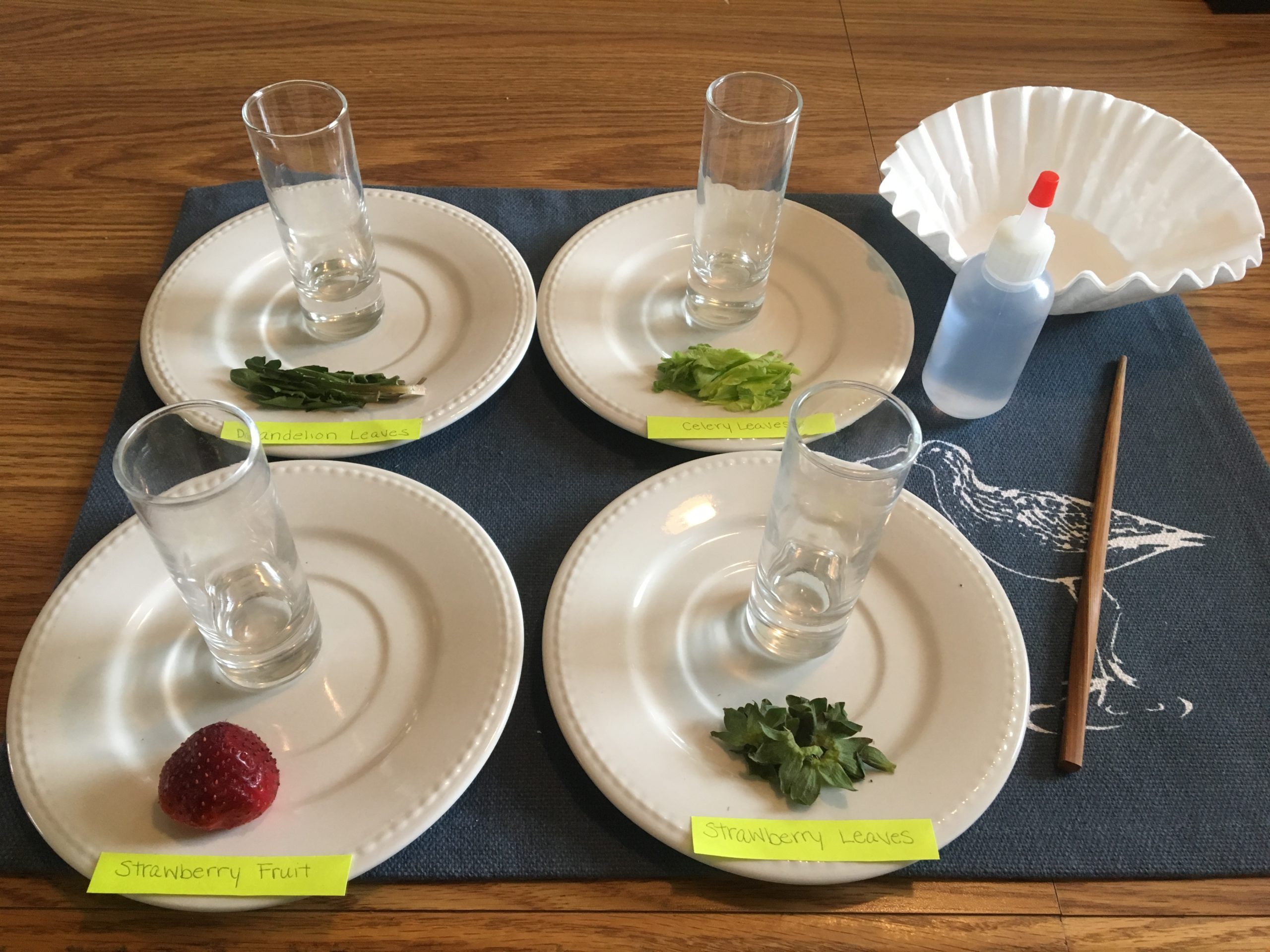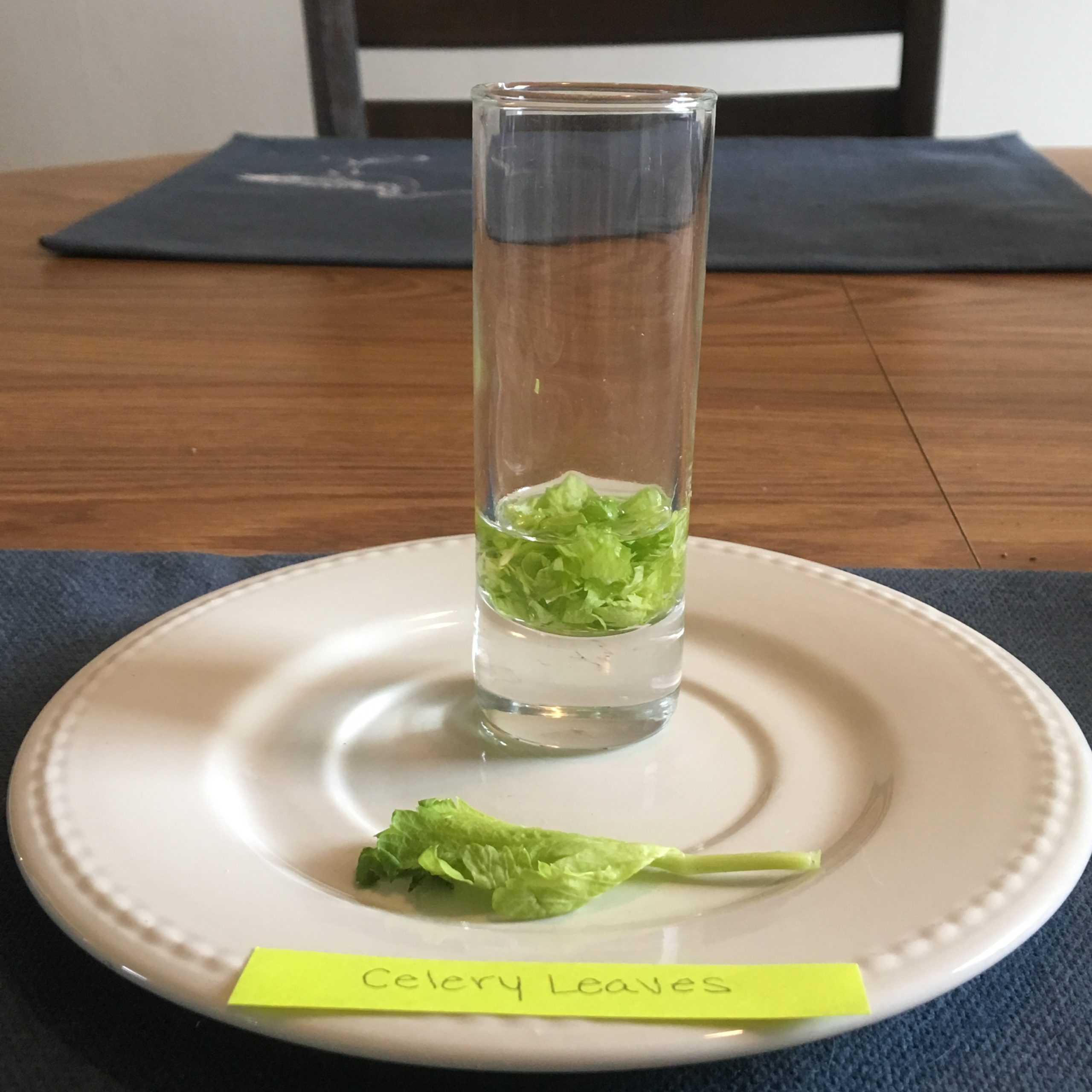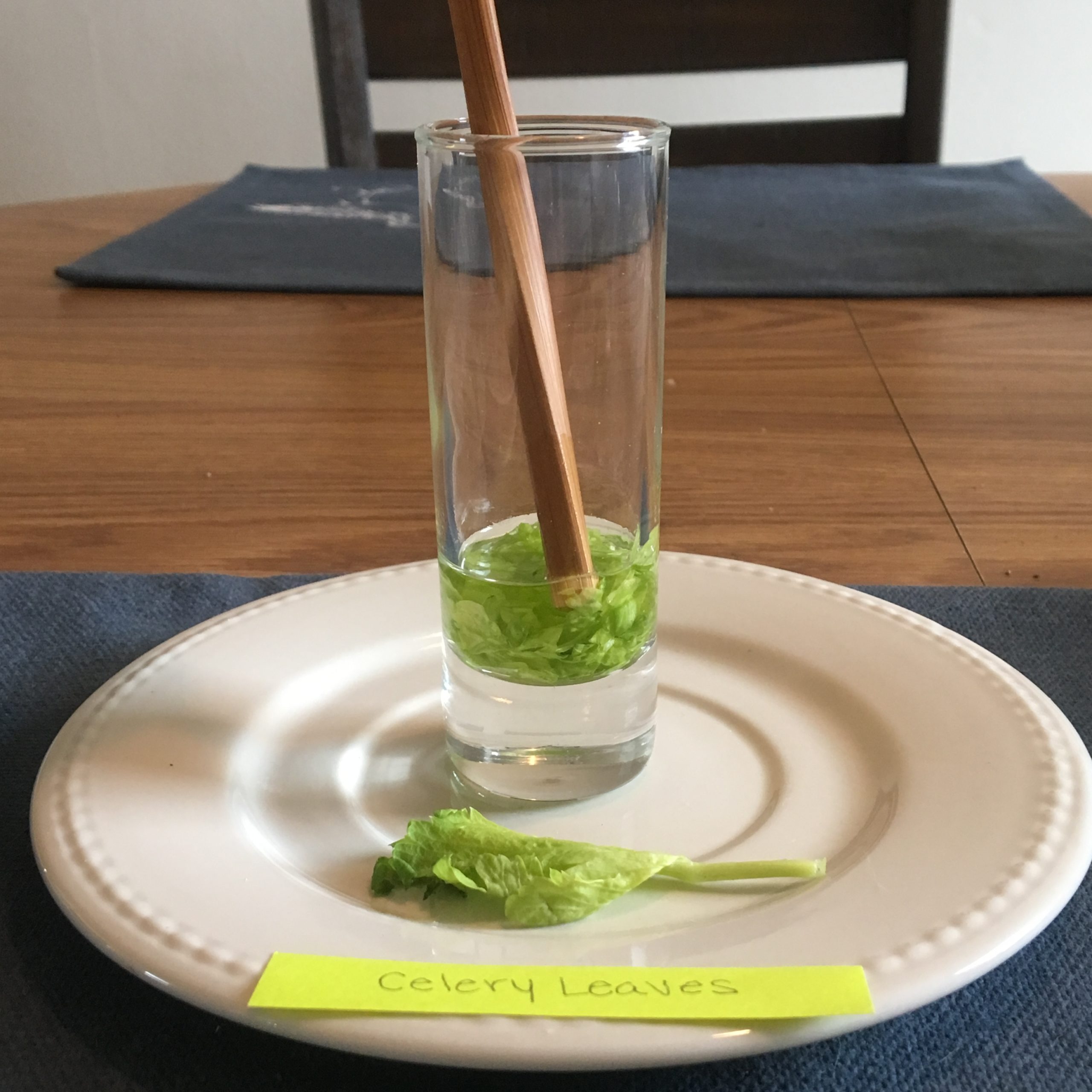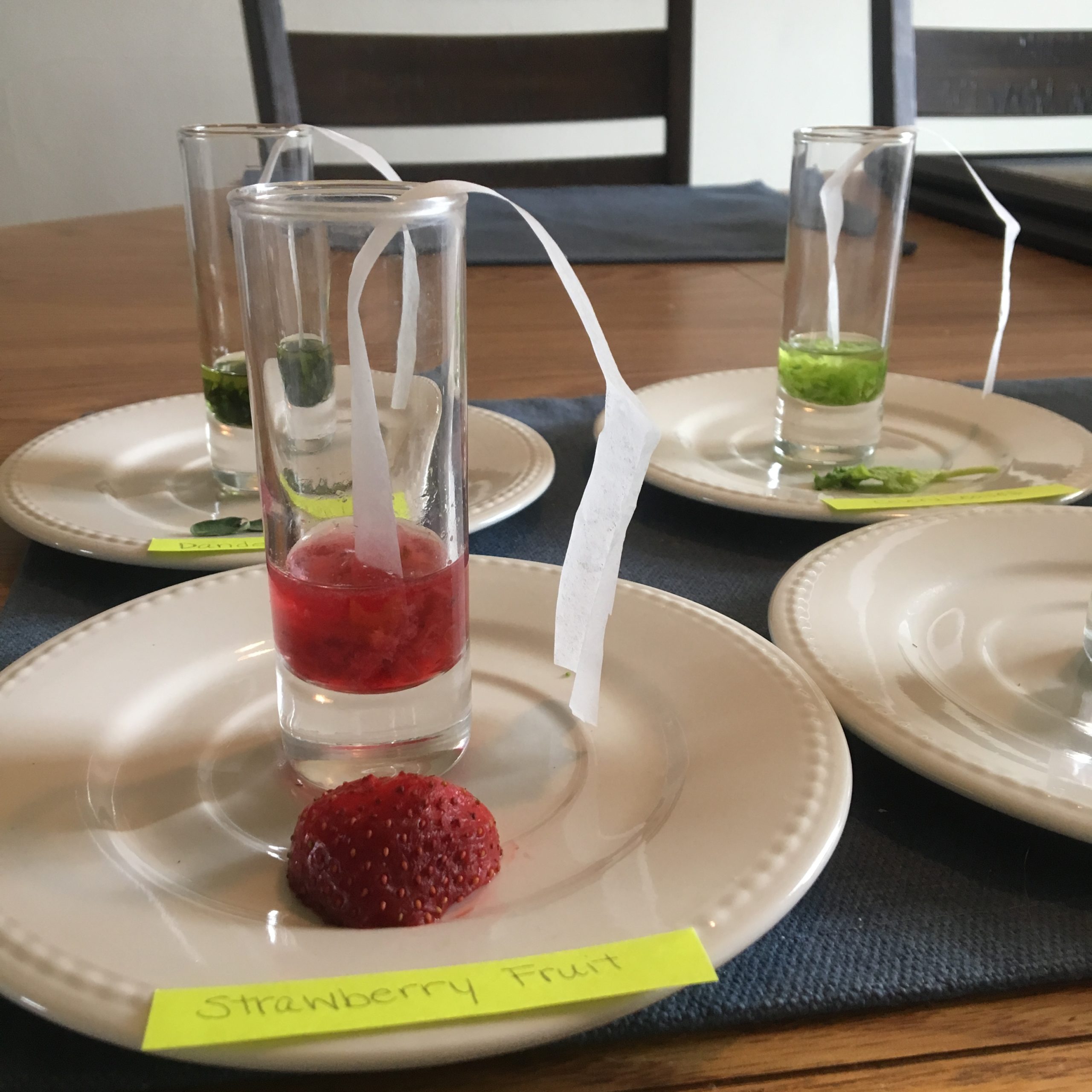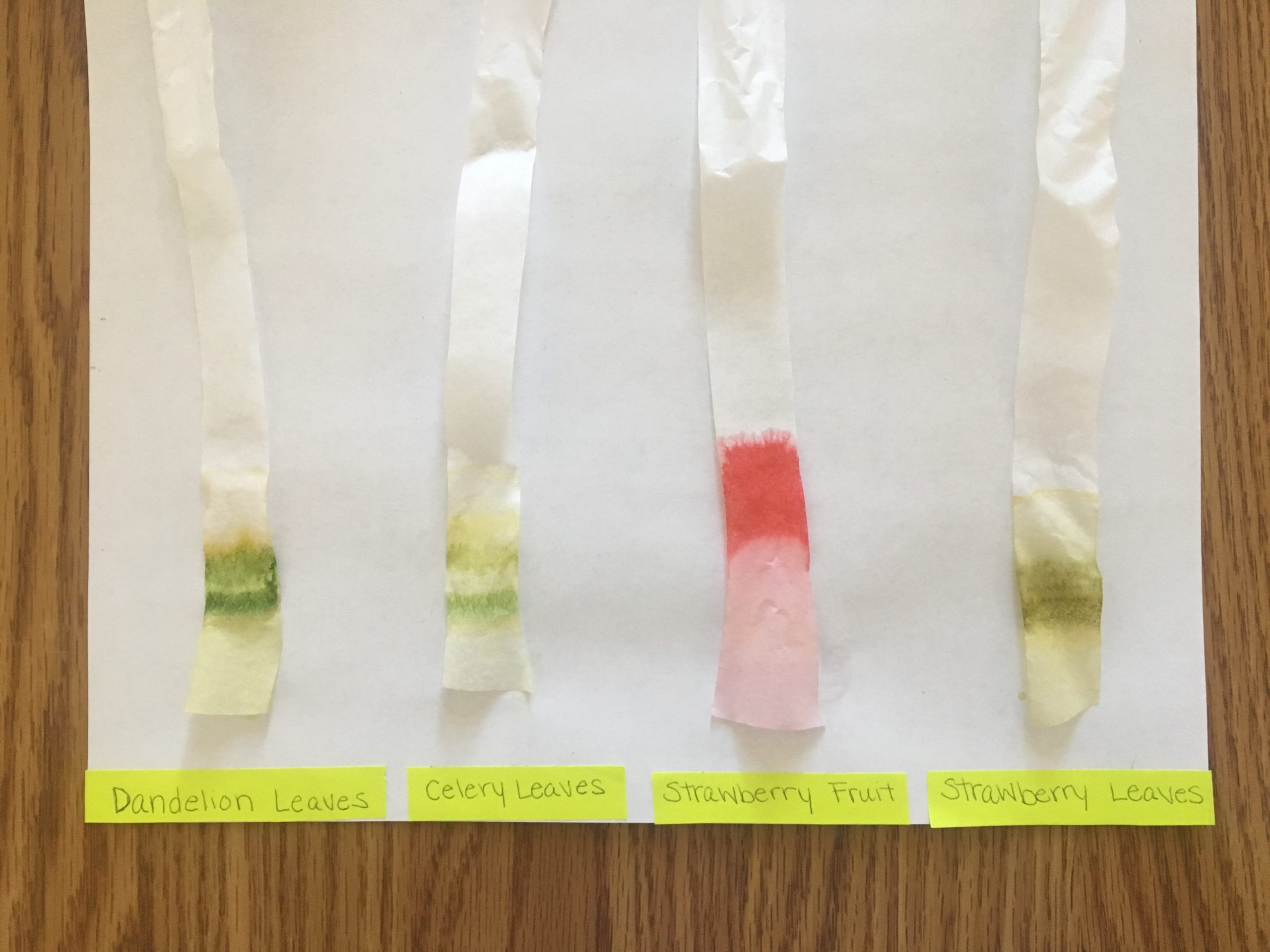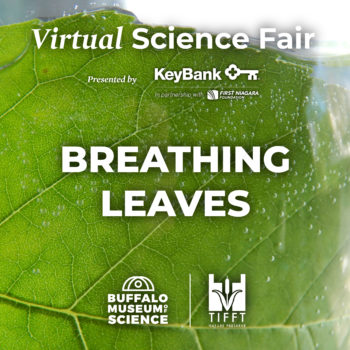Plant Pigments
Have science fun as a family! Complete activities with parental supervision.
Materials:
- Pieces of plant material (grass, leaves, flowers, veggies, etc.)
- Rubbing alcohol
- Cups (1 for each piece of plant material)
- Scissors
- Stir stick/spoon
- Coffee filter, cut into long strips
- Paper
- Crayons, colored pencils or markers
Procedure
- Go for a walk and collect plant specimens or raid your fridge!
- Using scissors, cut up plant material into small pieces and place in an empty cup. Be sure to only put one type of plant in each cup.
- Pour enough rubbing alcohol in each cup so the plant material is completely covered (see image 2, to right)
- Using a spoon or stick, stir the mixture for several minutes, taking care to smash the plant matter. You may notice the alcohol starts to change color at this point.
- Place a coffee filter strip in each cup, with one end touching the bottom of the cup and the other end hanging outside the cup.
- Do you notice anything happening to the coffee filter strip already? This experiment takes some time, so leave your set-up and come back after about two hours to check.
- Check back in two hours, four hours, and six hours. How has the appearance of the strips changed? Draw what you see on the paper.
- Be sure to take a picture or video to share in the Facebook comments on the Buffalo Museum of Science or Tifft Nature Preserve pages!
What’s it all about?
This experiment uses chromatography—a process scientists use to separate components from a mixture. For more
information, check out the Chromatography Art Virtual Science Fair activity here.
Instead of separating the dyes in a marker, we are separating the different pigments in the plants. Look to see if your plants have chlorophylls (greens), carotenoids (yellow, orange red), anthocyanins (red to blue), or betalains (red or yellow)!
Try It!
If you can, let the experiment sit overnight and check back in the morning.
